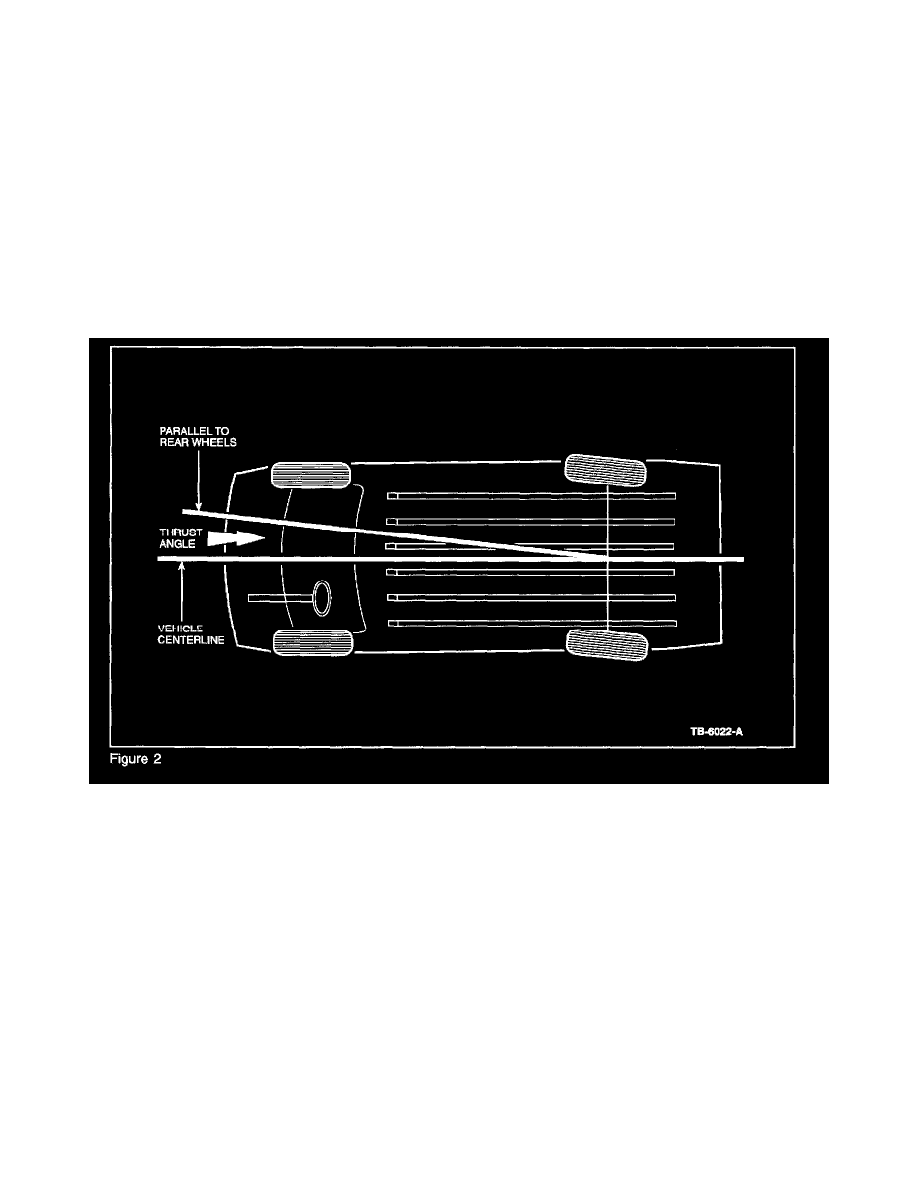Econoline E150 1/2 Ton V8-5.4L CNG VIN M (1998)

Second: The body of the vehicle is widest in the middle and tapers in toward the front and rear of the vehicle. The rear width of the vehicle is nearly
10cm (4 ") narrower than the widest section of the vehicle in the middle. The Supervan (extended length) continues to taper to the rear of the vehicle and
magnifies the optical illusion of dogtracking. Because of the taper of the body, a person driving behind the vehicle can see the side of the vehicle. ONLY
if a true condition of dogtracking is suspected, follow Service Procedure to verify and repair.
NOTE
ATTEMPTING TO USE THE FOLLOWING SERVICE PROCEDURE TO REDUCE THE APPEARANCE OF DOGTRACKING ON A
VEHICLE THAT IS NOT TRULY DOGTRACKING WILL LEAD TO ALIGNMENT AND TIRE ISSUES. DO NOT USE THIS PROCEDURE
UNLESS A TRUE DOGTRACK CONDITION IS VERIFIED!
NOTE
SOME NON-FORD AFTERMARKET SPRINGS DO NOT HAVE A CENTER BOLT IN THE LEAF SPRING, WHICH CAN CAUSE
DOGTRACKING BY NOT CENTERING THE AXLE ON THE LEAF SPRING. UNEVEN LOADING OF THE VEHICLE (LEFT TO RIGHT)
CAN ALSO CAUSE DOGTRACKING.
DIAGNOSTIC PROCEDURE
1.
Verify the vehicle dogtracks by measuring the rear axle thrust angle (Figure 2) on the vehicle with a calibrated 4-wheel alignment machine.
2.
Record reading and follow repair instruction based on reading:
a.
Thrust angle of 0 to +/- 0.5 degrees
(1)
Thrust angle less than 0.5 degrees (32 mm/1.25"centerline difference) is in specification
b.
Thrust angle of +/- 0.51 to 0.8 degrees
(1)
To modify thrust angle by 0.1 to 0.3 degrees:
